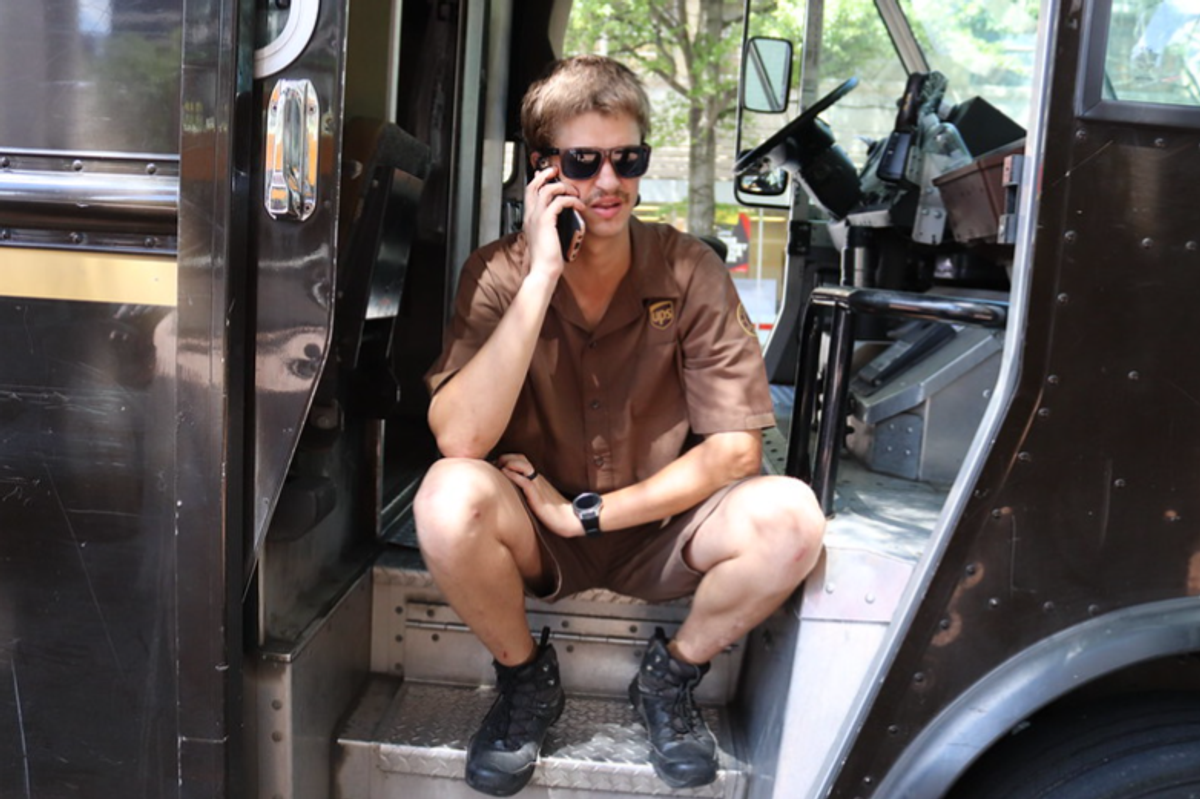UPS driver has a blunt take on America's economy after delivering Christmas packages
The delivery drivers know the economy as well as just about anyone.
A UPS driver on a phone call.
Certain professions have an inside look at the economy because they’re on the ground floor and see things change firsthand. For example, the advertising business knows that a recession is coming six months ahead of time, and realtors often get a good idea of how the economy is changing before the shock hits everyone else.
Delivery drivers are another group of people who can get a good idea of how the average person is doing. They have more packages to deliver when the economy is doing well and fewer when things take a turn for the worse. That’s why a TikTok by UPS driver Donate McCauley (@dontaymccauley) has so many views. After delivering Christmas packages, he thinks things are going well for most people at the end of 2024.
“I thought everybody was broke. I thought we were trending towards a recession, and y’all been complaining all year about finances, and y'all say that until Christmas,” the UPS driver said in a video with over 100,000 views.
@dontaymccauley credit card debt going crazy. #ups #peakseason #Texas #foryoupage
“I see y'all actually do got money. And y'all making us pay, for every house got, like, 3, 4 packages. I'm loaded up,” McCauley continued. “Every day I'm going out with 400 packages on this truck, and y'all killing us, man, give us a break. But I thought you ain't have no money, though?”
Was the U.S. economy good or bad in 2024?
The post received many comments; some said they are having difficulty getting by this year, while others say they are doing pretty well these days. It’s another example of the lukewarm way that people have viewed the U.S. economy since the COVID-19 pandemic subsided.
“Broke as in it costing me a whole helluva lot more to live than it should. I will always have money for Christmas one way or another,” Lisa Marie wrote. “We’re using After Pay. I did LOL,” Juanita added.
“I have been saying this ALL YEAR. Every restaurant, every tourist attraction, special event, and retail store is PACKED most of the time in my small ‘poor’ city,” SteelersGirl wrote. “I said this to my husband a few weeks ago. Everywhere I go, people are buying stuff. Car dealership was packed last week, too. The economy seems ok,” Wiat What wrote.
Another delivery driver chimed in, and she shared McCauley's sentiment. “USPS here. I have been saying this for the last year,” ChicagoGirl wrote.

Did Americans spend more in 2024 on Christmas?
The confused delivery driver who says that people are saying one thing but spending in another tracks a pre-election poll. A survey taken in September 2024 found that 62% of respondents said the economy was weak, while 38% said it was strong.
Regardless of how individuals feel about the economy, the numbers don’t lie. 2024 was a strong holiday season for retailers. Visa says that spending is up this holiday season 4.8% over 2023. "This holiday shopping season, we’re seeing increasing consumer confidence as people sought out in-store experiences – and went online – to purchase gifts and celebrate the holidays with friends and family,” Wayne Best, chief economist at Visa, said in a statement. “This spending growth demonstrates the adaptability of both consumers and retailers and the overall strength of the economy.”
What will Christmas spending be like in 2025?
This year's Christmas season is expected to be less robust than last year's. Inflation, tighter credit lines, and tariff pressures mean that, according to Zeta, there will be a 27% drop in American shoppers looking to spend $1,000 or more during the holiday season. There has also been a 2% increase in those who say that they will spend less than $100 (34% up from 32%). The bottom line is that consumers will be more deliberate about their spending this holiday season, and more people will be seeking discounts.
This article originally appeared last year and was updated.

